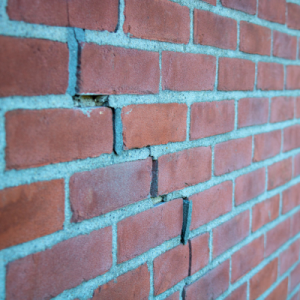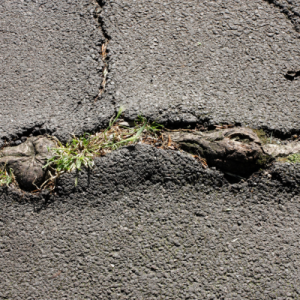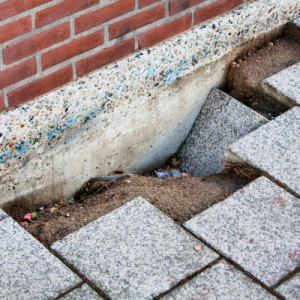|
Direct and indirect tree root damage
 Often, damage by tree roots is direct, caused as the roots exert pressure on structures such as drains, foundations and paths. But damage can also be indirect, as roots draw water from clay soil, which then rehydrates following significant rainfall. This constant shrinkage and expansion may cause subsidence and heave in nearby structures. And significantly, even trees whose roots have not encroached across a property boundary contribute to this effect. But whatever the mechanism, the resulting bill for remedial works is often substantial, and you will need to consider claiming compensation for tree root damage if the trees responsible are on neighbouring land.
Often, damage by tree roots is direct, caused as the roots exert pressure on structures such as drains, foundations and paths. But damage can also be indirect, as roots draw water from clay soil, which then rehydrates following significant rainfall. This constant shrinkage and expansion may cause subsidence and heave in nearby structures. And significantly, even trees whose roots have not encroached across a property boundary contribute to this effect. But whatever the mechanism, the resulting bill for remedial works is often substantial, and you will need to consider claiming compensation for tree root damage if the trees responsible are on neighbouring land.
In addition to underpinning or rebuilding, it’s always important to factor in the cost of remedying the cause. Often, that remedy is felling the tree(s). However, an alternative could be reducing its size to limit transpiration. A smaller tree means less evaporation from leaves, reducing the amount of water the tree draws from the soil.
Worst trees for subsidence
Any tree of significant size has the potential to cause or contribute to subsidence. But some types of trees have the potential to be more problematic if located close to structures. These include:
- Willow trees love damp conditions and mature trees can extract a staggering 1,000 litres of water daily from the soil. In addition, their roots regularly invade drains and other pipes.
- Oak trees have shallow spreading roots perfect for causing havoc to house foundations. In addition, their large canopy requires vast amounts of moisture.
- Poplar trees grow very fast, but just like the willow, their roots are highly invasive, often spreading up to 40 meters from the trunk.
- Ash trees are also fast-growing deciduous trees with a wide root spread.
Who is liable for damage caused by trees?
If you have trees on your property, you have a legal duty to take reasonable steps to prevent or minimise the risk of damage to neighbouring property. This duty arises not only if you know the roots encroach over the boundary. It also applies if you ought to have known about this. Good indicators are the tree’s size and/or position close to the boundary. To establish the legal duty:
- you must have known – or ought to have known – of the encroachment, and
- it must be reasonably foreseeable that this encroachment will cause damage.
The legal term for damage caused by tree roots is ‘nuisance’. It’s important to understand that a neighbour can be held liable for a nuisance that began before they purchased the property. To be liable, they must have had knowledge of it (actual or deemed) and have failed to take reasonable steps to rectify the problem.
Proving tree root damage
Your assumption that the roots of your neighbour’s tree are the cause of the damage on your property is insufficient. You must prove it. Lawyers refer to this as ‘causation’. Factors unrelated to tree roots can cause similar types of damage. For example, consider faulty construction or settlement/subsidence caused by another factor. Even if tree roots are the cause, investigation may discover that the roots belong to a tree on an entirely different (or even your own) property. Remember just how far roots can spread.
Claims often require experts in different fields to assist the parties and the Court. For example, an arboriculturalist (tree expert) can advise whether or not the tree in question caused or significantly contributed to the damage. The Arboricultural Association can help you find a specialist.
In the same way, you may require a surveyor and/or a structural engineer. They can advise on the nature and extent of the damage caused and the rectification works required. The Royal Institution of Chartered Surveyors (RICS) can help find a suitable surveyor. For a structural engineer, try The Institution of Structural Engineers. Alternatively, your property disputes solicitor will almost certainly be able to recommend experts to you.
Council owned trees causing damage
 Many claims involving tree root encroachment involve council-owned trees causing damage to neighbouring private property. Local authorities are legally obliged to have an ongoing programme of inspection and maintenance in respect of ‘their’ trees.
Many claims involving tree root encroachment involve council-owned trees causing damage to neighbouring private property. Local authorities are legally obliged to have an ongoing programme of inspection and maintenance in respect of ‘their’ trees.
As a result of this requirement, it’s generally much easier to establish that they are, or should have been, aware of the potential of damage compared to a claim against a private individual.
Your claim should succeed if the Court accepts:
- the damage was reasonably foreseeable, and
- was caused or significantly contributed to by those tree roots.
Compensation for tree root damage
If the damage is ongoing and the owner of the tree(s) refuses to rectify the problem, you can apply to the Court for an injunction to ‘abate’ the nuisance. This will force your neighbour to take preventative steps. Such steps might include felling the tree(s) or managing it properly to prevent further damage.
Other than any required injunction, your claim will be monetary for compensation. Most of your compensation claim will likely relate to rectification works. For example, this might include underpinning, repairs to cracks, rebuilding walls and paths or relaying sections of a drain. You will almost certainly require expert evidence from a surveyor and/or a structural engineer. And subject to that, you will need to obtain comparative estimates for the cost of the work.
Diminution in value of property
In addition, you may also have a claim for the diminution in value of your property. Typically, this occurs where the property is ‘tainted’ by subsidence. Essentially, selling for the same value as it would without the history of subsidence becomes more difficult.
Another consideration is future insurance, which will almost certainly carry a significantly higher premium, even if available.
Claiming for subsidence on your buildings insurance
 It’s tempting to allow your home insurer to negotiate a settlement with your neighbour or the local authority. However, your insurer is only interested in the insured risk. So, that is unlikely to include any claim for diminution in value.
It’s tempting to allow your home insurer to negotiate a settlement with your neighbour or the local authority. However, your insurer is only interested in the insured risk. So, that is unlikely to include any claim for diminution in value.
That said, you should always notify your home insurer as soon as you know of a potential claim. This is because the policy will inevitably contain a provision requiring reporting any claim (or potential claim) within a specified time. If you fail to report in time, your insurer can repudiate the claim. And that may leave you in a difficult situation if you subsequently need to redirect the claim, or part of it, to your home insurer. An example of where this can happen is when a possible claim against your neighbour is unlikely to succeed after investigation.
Once you have notified your home insurer, you should take independent advice on whether you have a claim for diminution in value. Your insurer will not cover the cost of this advice. But you must balance that outlay against the possible need to bring a claim for diminution. And bear in mind that such a claim could be as much as 20% of the property’s value.
Whatever your neighbour may tell you, you are not obligated to claim on your home insurance. Many people take initial advice from a specialist property disputes solicitor. In turn, we can recommend experts in various disciplines, depending on the type of evidence required.
Mediation
Despite the potential for litigation, resolving disputes quickly and at a limited cost is possible if both parties are sensible. But if issues prove more challenging to resolve, there are alternatives to going to Court.
Indeed, the Court always encourages parties to engage in other forms of dispute resolution, such as mediation. A mediator helps the parties work to find a mutually acceptable way forward. The process is often successful and significantly less expensive than taking the case to Court.

